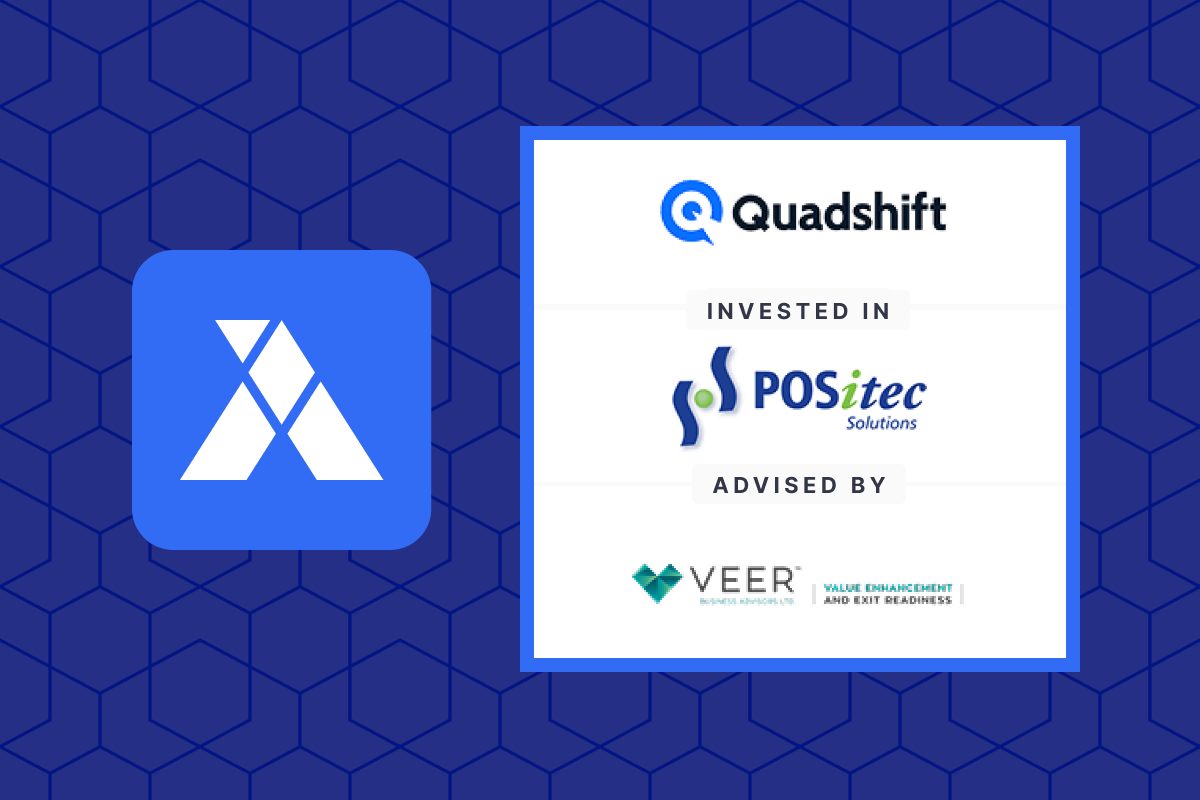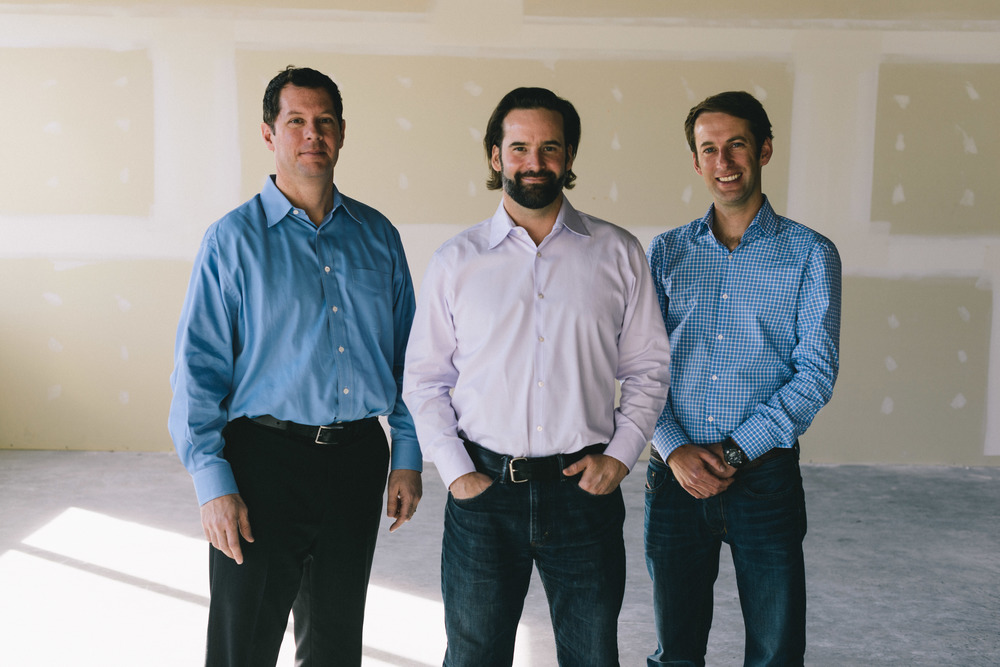
Case Study: Quadshift Acquires POSitec Solutions Advised by Veer Business Advisors
“We’re thrilled to welcome Positec into the Quadshift family. Positec is a market leader in pharmacy retail POS software in…
Paul Reddy is a partner at Newpark Capital, a private equity firm focused on investments that deliver positive social and environmental change.
Paul co-founded Newpark in 2015 with two partners, Elliot Anderson Rohde and John Howe (they’ve since added an additional partner, Jasper van Brakel). The firm has closed two investments to date — a control investment in Wise Woman Herbals in August 2015, and the acquisition of a second health and wellness company in May 2017. The second investment, which is currently confidential, was sourced through Axial.

We talked to Paul about Newpark’s business development strategy, how he and his partners decided to focus on impact investing, and the biggest challenges of starting up a new PE shop.
Axial: As a new firm, how does Newpark approach deal sourcing?
Paul: We are still a young firm, and Axial has really been instrumental to us. It’s been important to help get our name out, and extend our reach beyond what our own network can provide to us.
We’ve started out like many others have. You have to start with your network, then your network’s network. You have to build up a track record, and then when you have some proof points, you can start increasing the volume of outreach and inbound deal flow. Now, we’re getting to the point where we’re also seeing inbound deal flow from other sources as well. When we go public with our second investment, we expect that will increase.
How did you and your partners decide to focus on impact investing?
After our first acquisition, we found that each of us was independently screening potential investments using our own informal criteria, and that we were all independently eliminating non-impact investment opportunities from our individual pipelines. We had this “aha” moment, where we discovered that the opportunities that really made us passionate and willing to invest the time and diligence to follow up were what we’ve come to call “and” investments — that is, investments where we could deliver economic returns to investors without compromise and deliver social and environmental impact as well.
I think we’re seeing the very beginning of impact investing. Even when we’re talking to potential LPs who are not explicitly looking to make impact investments, the issues are starting to come up. It’s not just social and environmental impacts, but things like good governance and employee and community welfare. I’d encourage folks, even if they’re not impact investors, to not ignore impact themes, because they’re not going away.
How do you evaluate potential opportunities?
We make sure that there’s an impact story, and that the story is honest, measurable, and reportable. That’s important to our LP community and to us personally. We also make sure during the diligence process that we can follow through and support the impact story, and that it truly is an “and” investment in that it reinforces the economics part of the equation.
For example, our first investment Wise Woman sources a lot of its raw materials from local farmers — many of them within 25 to 50 miles of our facility in Oregon. We literally have wild crafters and farmers who bring their product fresh from the field or the forest to our door in trucks. There’s a whole network of people who depend on Wise Woman in the local agriculture community, and we’re proud of that.
How have you added value for Wise Woman since your investment?
Wise Woman is a premium 27-year-old brand with a focus on providing products to complementary medicine practitioners. So we had this brand that had a long history, was super high quality, and stood for a lot — but it was underexposed and underdeveloped.
Our thesis was, let’s get this brand out and give it the air it needs to grow. We’ve built a lot of manufacturing capacity on the back end since we’ve invested. We’ve expanded distribution internationally. We’ve also brought in a couple of partnerships with companies both in and outside the US, where we manufacture products for them at a larger scale. Not everything has gone exactly according to plan — for example, we had three specific growth initiatives that we were going to focus on, and we numbered them one, two, and three, but ended up executing them three, two, one — but nonetheless, our plan is happening, and the business is growing.
You were a CEO and also worked in management consulting and investment banking. What do you like about your current role in private equity?
I left my career in investment banking way back when, when I was 25 or 26, and since then I’d really forgotten how much I like working with transactions — structuring and negotiating and finding solutions that work for all parties. That’s been way more fun than I expected. It’s not why I got into private equity, but it’s fun and it uses a part of my brain I haven’t used for a while.
When we’re dividing up responsibilities in the firm, I generally focus on that — the structuring and transaction aspects — while my partner John focuses on diligence, keeping the business of Newpark Capital going, and maintaining communications with our investors. Elliot focuses a lot more of his time on building our relationships with current and potential capital partners. We recently added a fourth partner, Jasper van Brakel, who brings a broad network in a sector we’re particularly interested in — natural products.
Are there any challenges of sharing leadership responsibility among four partners?
Forming a partnership that works for everybody is hard — especially a partnership of people who have all been successful, all been in leadership positions, and all been used to running the show. The reality is that for partnerships to work, it’s like a marriage. Everyone needs to meet in the middle, and that middle moves all the time. That’s something we’re all learning. We don’t have open conflict, but we’ve learned that if we don’t communicate regularly, then we can get into trouble.
But it helps that we’re a volunteer army. We were all at the point in our careers where we had the opportunity to choose the people that we wanted to work with — we formed a partnership before we had a business plan. We chose to do this, and we’re choosing to work together to build up a portfolio of companies that are making a difference.
What might we find you doing in your free time?
I’ve got two active kids, and an office that’s seven minutes from my house. This job is a high-intensity job, but it does offer me the flexibility to shift time around as needed and stay involved. My partners and I all make a point to spend time in our communities. I’ve been a volunteer ski patroller for 13 years. I spend every Sunday in the wintertime doing that — it keeps me sane and grounded.
